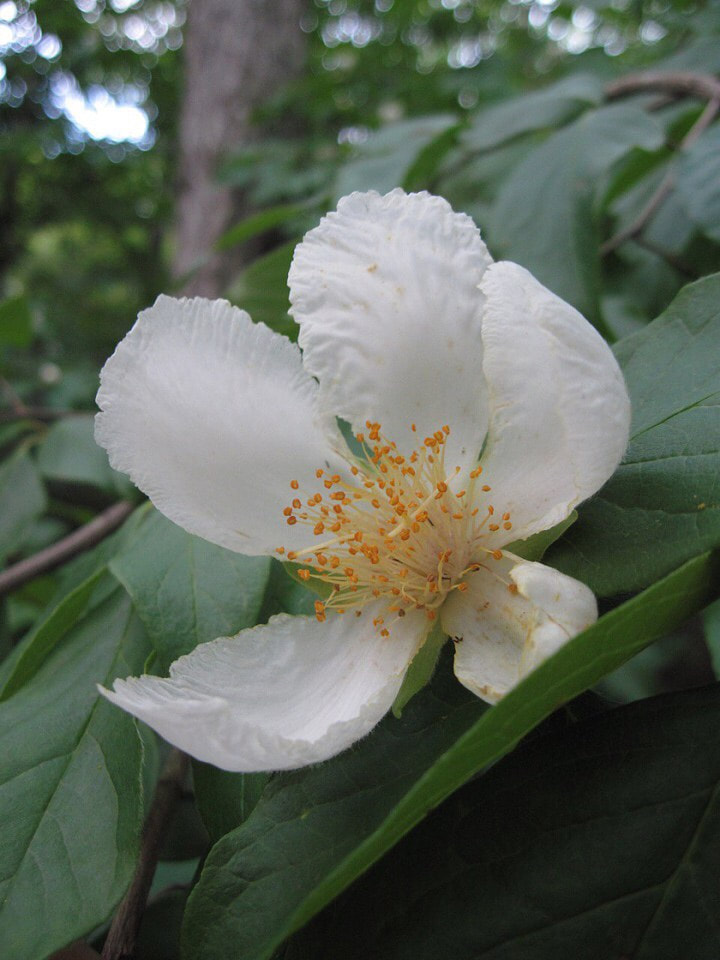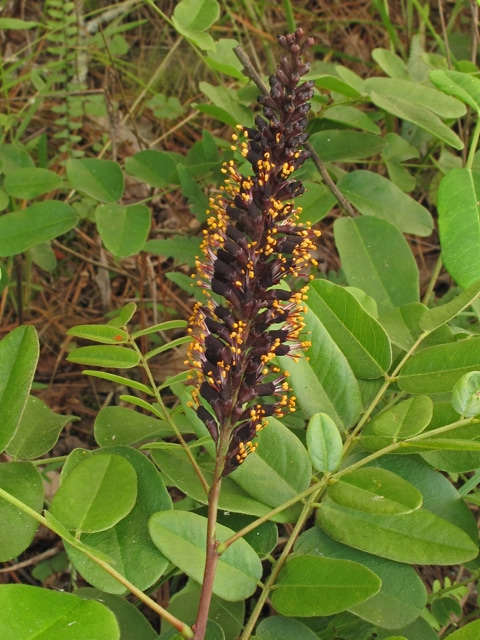Long Mountain Slopes / Poison Fork
A little about the Preserve
|
Tucked away along the slopes and ridge of Long Mountain in northern Montgomery County, Long Mountain Preserve is home to a couple of tracked plant species, including Stewartia ovata, Mountain Camellia. Pictured to the left, the photo is courtesy of Crystal Cockman, Land Trust of Central NC and FOPC board member. The small tree/large shrub grows to about 15' with an equal spread. It is native to the Piedmont from Virginia to Alabama. The dark green leaves turn an iridescent orange in fall. The five-petaled white flowers are about 3 inches in diameter with orange anthers and blooms in July. It is in the tea family member (Theaceae) and is closely related to Camellia, Franklinia and Gordonia. In N.C. they can be found in Wake, Stokes, Surry, Randolph, Montgomery, Burke, Transylvania, Swain, Macon, and Cherokee counties. |
|
Another of the tracked species at Long Mountain is Amorpha schwerinii, Schwerin's or Piedmont False Indigo. They can be found in Randolph, Montgomery, Stanly, Davidson Rowan, Iredell, Catawba, and Cleveland counties in North Carolina. Small patches are also found in Georgia, Alabama, and possibly South Carolina.
The shrub grows to as much as 6' tall, blooming with deep purple flowers from April to June. The photo to the left is also courtesy of Alan Cressler, Lady Bird Johnson Wildflower Center - www.wildflower.org |
Access to this Preserve, as with all others is by written permit only. Finding the site requires being accompanied by a knowledgeable person, as there are no trails into or on the site, and crossing private property is required.
Field Trips are regularly scheduled to Preserves by FoPC, and if you have a specific need beyond the scheduled Trips, you may contact Lesley Starke NC Plant Conservation Program Plant Ecologist.
Field Trips are regularly scheduled to Preserves by FoPC, and if you have a specific need beyond the scheduled Trips, you may contact Lesley Starke NC Plant Conservation Program Plant Ecologist.



